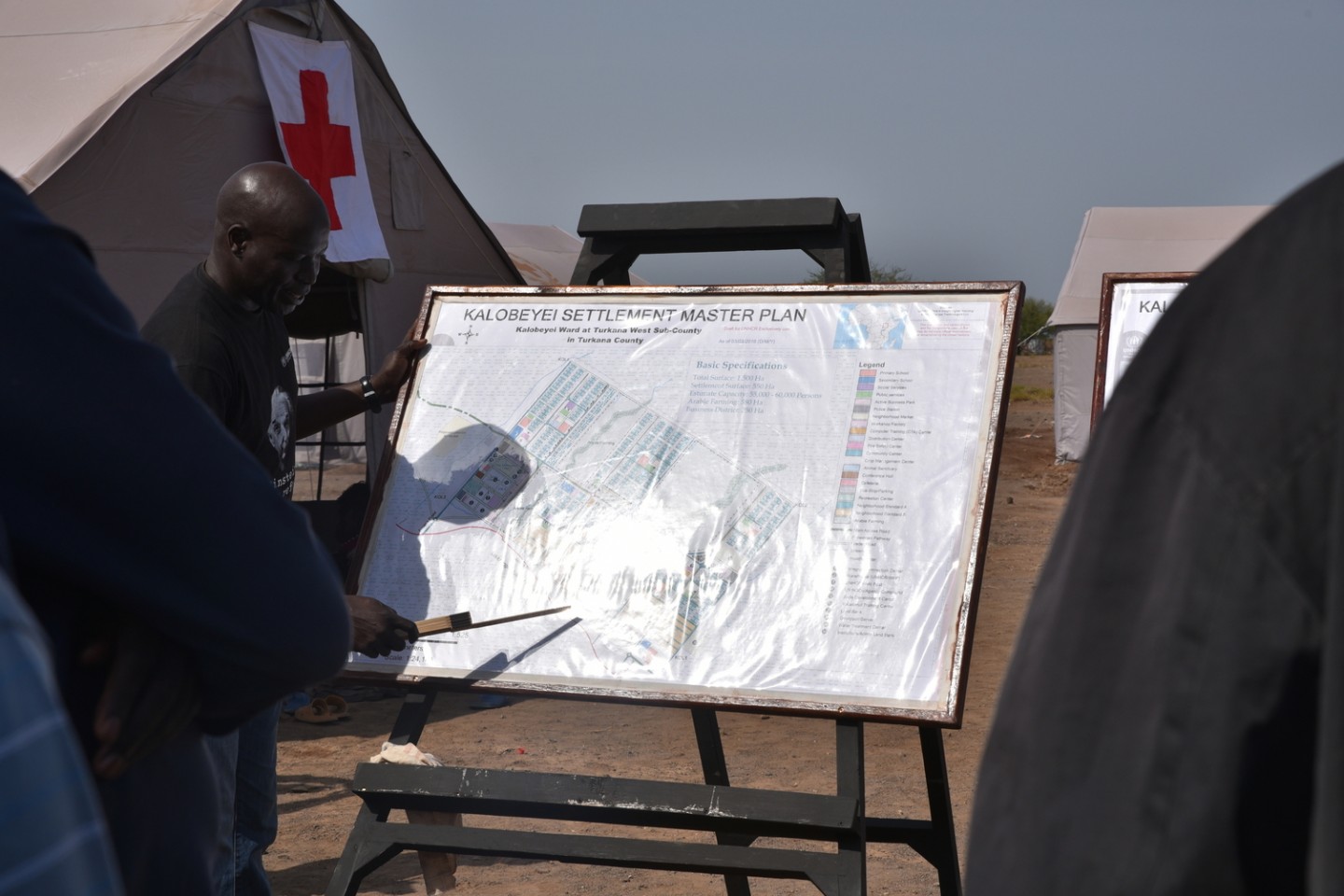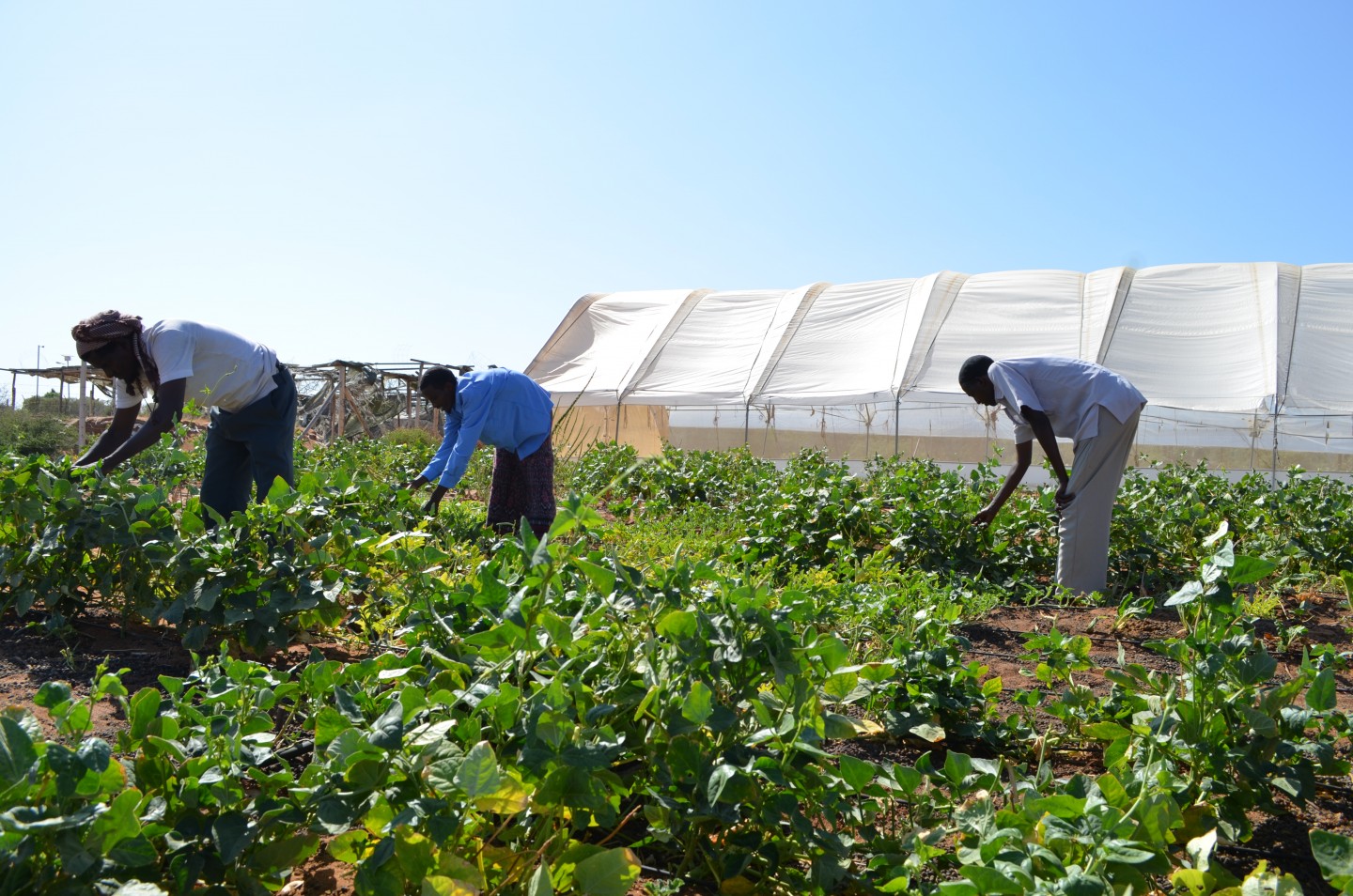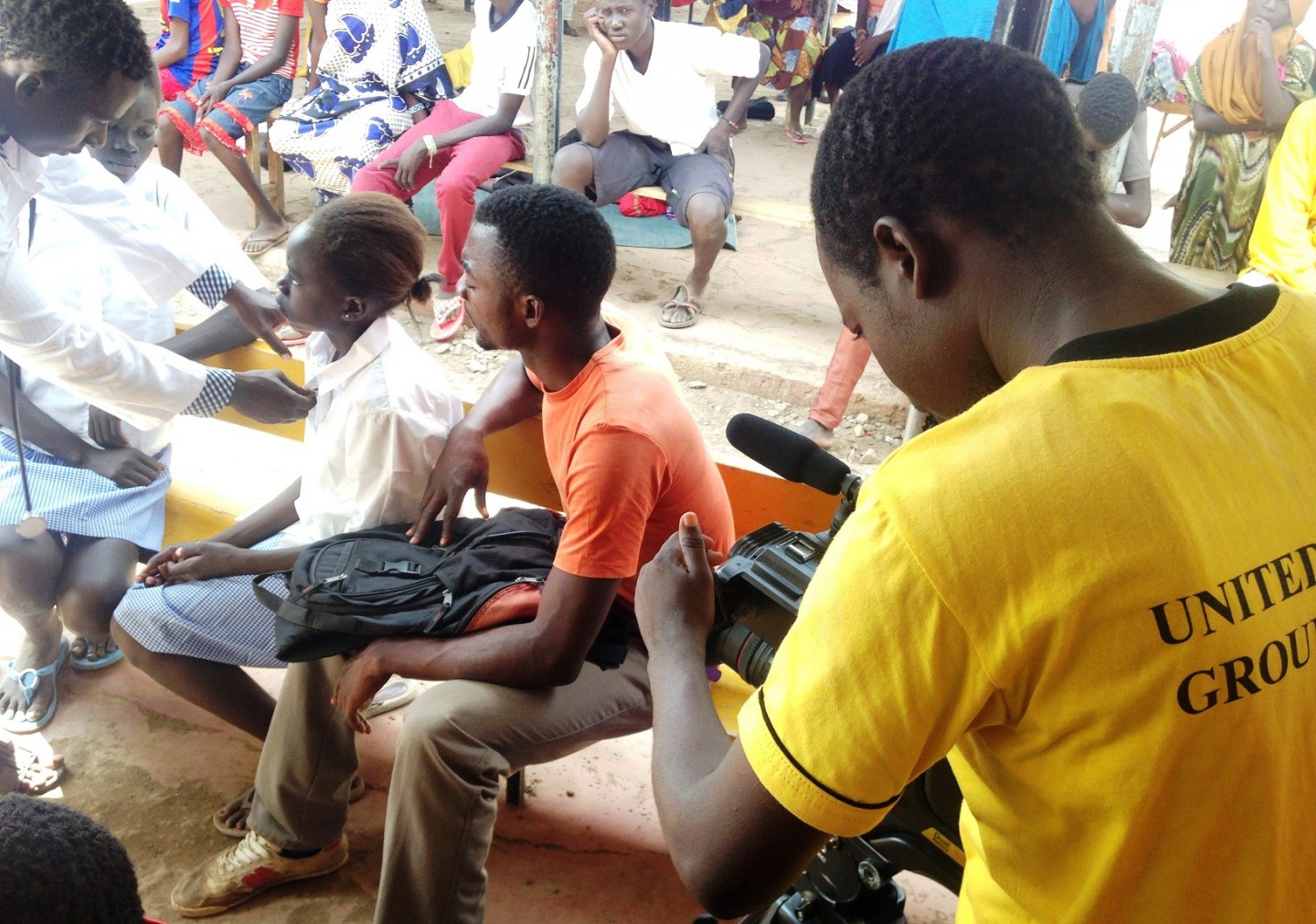Model Farms Transforming Lives In Kakuma Refugee Camp
Binamungu was keen on farming despite the climatic hardships so he and a group of friends started farming along the river beds that cut across the camp.
KAKUMA REFUGEE CAMP, Kenya, December 18, 2015 – Since arriving in Kakuma Refugee Camp two years ago, Binamungu Sylvestre had been looking for an opportunity to do something meaningful with his life. Fleeing conflict from his home country, Burundi, was one of the saddest things he ever had to do and as a farmer, he was at a loss when he arrived in the camp which was hardly ideal for farming, given its semi-arid nature.
“I left Burundi in sadness and I hoped to find some relief through farming which is my passion,” he says. “I tried some subsistence farming in my yard but it was not fulfilling.” The weather pattern in Kakuma is unpredictable with high temperatures and very little or intermittent rainfall. Occasionally, the area experiences flash floods which affect crops in the small farms.
Binamungu was keen on farming despite the climatic hardships so he and a group of friends started farming along the river beds that cut across the camp. Although they worked as a group through joint efforts, they still faced a number of challenges including insufficient water for the crops and lack of fertilizer. ‘We were doing subsistence farming so there was hardly enough left over to sell.”

The farm uses simple yet effective technology where solar power is used to pump water from a shallow well to water tank. The water is then channelled through pipes for drip irrigation.
UNHCR was acutely aware of the livelihoods needs in the camp and through previous assessments had realized the need to have a viable livelihood project in place to support farming. “It was especially important to support refugees who have a farming background as the need for supplementary food is high in the camp,” UNHCR Community Services Officer Ms. Katie Ogwang says. In collaboration with Action Africa Help International, farmers like Binamungu were profiled and identified at the beginning of the year to start up model farms in the camp.
Peter Cheptuma, the Agriculture Officer at AAHI in charge of the model farms has been working with the farmers since the beginning of the year. “We want them to realize the benefit of using simple technology to improve their output,” he says. The technology is neither complicated nor expensive. It costs some 2,000 USD to set up; solar power is used to pump water from a shallow well (about 10 metres deep) to an elevated water tank of 1,000 litres capacity. The water is then channelled through pipes laid across the farm for drip irrigation. It is a simple, less tedious and economical way of utilizing the scarce resource for maximum output.
“I like this method because it requires only one person to switch on the pump and takes less time to water the crops,” says Maulida, one of the farmers and a mother of three from Burundi. “Previously, three to four people were required to water the crops and there was a lot of wastage of water.”
So far, over 300 farmers in 35 farmer groups from different nationalities are working together in the two farms. They have been trained on various aspects of improved farming, drip irrigation, formation of cooperatives and agribusiness. “We believe that seeing is believing so the farm is a demonstration tool that enables the farmers put in practice what they have learnt and see the immediate results,” says Peter Cheptuma.

One of the model farms in the camp. The quarter acre piece of land has transformed this part of the camp into a serene green environment.
In the year, the farm has had three harvesting cycles and in each cycle the farmers have harvested produce worth USD 4,000.
“I am happy to see the farmers embracing the model farms so positively,” Katie Ogwang says. ”The idea is to empower them by teaching them the technology in the hope that they can replicate the success in their communities.”
With the skills they have learned, Binamungu, Maulida and the rest have embarked on a sustainable livelihood project that has changed their lives and that of others in their communities. With just a quarter acre of land, they have been able to produce lush vegetables and fruits including okra, spinach, kales, tomatoes, watermelons and capsicums. Furthermore, they have transformed the desert landscape of Kakuma to a greener and friendlier environment.
“I love coming here every day,” says Binamungu. “It is nice and green and reminds me of the countryside back home.” He is also glad that he has learnt some new skills and is able to make a decent living.
“We have learnt a lot through UNHCR and AAHI in this farming project and I want to take these skills back home one day,” says Binamungu. “The proceeds are good and I am able to make good savings even as I take care of my family.”
By Cathy Wachiaya in Kakuma Refugee Camp, Kenya.



